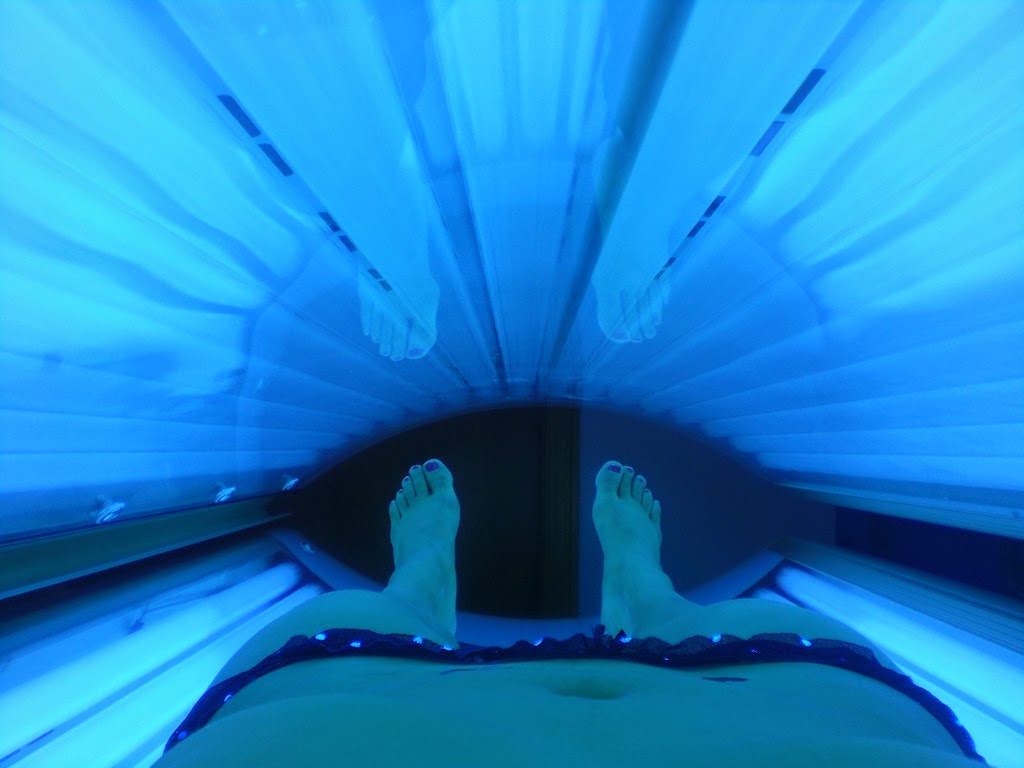 |
| Photo: Flickr/whatshername, Creative Commons Lic. |
There was a nice piece in the New York Times this weekend on the risks of indoor tanning, particularly in youth. Focussing on the personal experiences of a handful of young women and their parents, it does a very good job highlighting the well-established risks of skin cancer and deadly melanoma, the continued allure of tanning, and some promising advances in tanning salon regulation and rates of tanning by youth.
“The tanning thing is like the smoking thing,” she said. “Everyone used to smoke. And then they said, ‘You’ll die of lung cancer.’ That’s what’s happening to tanning.”
Of course, attitudes to tan skin and tanning can be slow-to-change, especially since they are so intertwined with other complex issues of appearance and body image. But the multi-faceted approaches that have been used so far have a great chance of success. For real progress, though, they need to be extended to more states and expanded in approach. The blistering truth is that we still have a long way to go.
Other Cancer News in Context articles on tanning and skin cancer risk:
New Study: Tanning Bed Use Brings Skin Cancer RisksJun 25, 2014
A new study out this week further confirms the dangers of indoor tanning, finding that use of tanning beds and other UV tanning devices is strongly linked to developing skin cancer early in life. Published early online in the …
Tanning Industry Fights the Blistering Truth: That Tanning Beds Raise the Risk of Melanoma and Other Skin CancersJan 07, 2013
A recent article in MedPage Today highlighted the birth of a new tanning salon industry-sponsored group that has the sole intent of refuting well-established and peer-reviewed science showing the dangers of tanning bed use …
With Spring in the Air, New Sun-Safe, UV-Safe Recommendations from the American Academy of PediatricsMar 29, 2011
The statement, published in the journal Pediatrics (link), refreshes and reinforces what many of us know – that unprotected sun exposure and tanning bed use are unhealthy activities for everyone, but particularly so for youth.
Mother/Daughter Tanning and the Dual Nature of Family HistoryDec 29, 2010
We’ve dedicated a number of posts over the past year on the policy and health pitfalls of indoor tanning – from the potential benefits of the “tanning tax” (post) to surprisingly high rates of tanning by some youth (post).
Tanning Beds, Addiction, and TaxesApr 20, 2010
A new study in this month’s Archives of Dermatology suggests that indoor tanning can be addicting in young adults (study) (1). While the study was relatively small, with just over 400 participants surveyed, the results seem to …
More Blistering Truths About Tanning Bed Use By YouthApr 05, 2010
A new study published online last week in the British Medical Journal on tanning bed use by youth in the United Kingdom has raised concerns well beyond its shores (full study) (1). The study surveyed over 9,000 children …